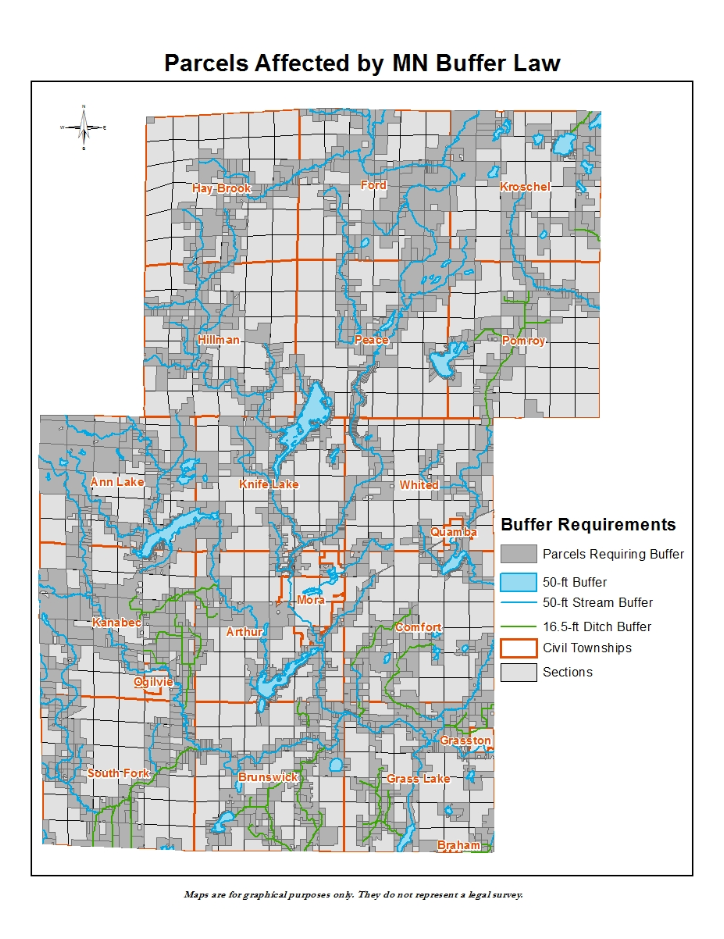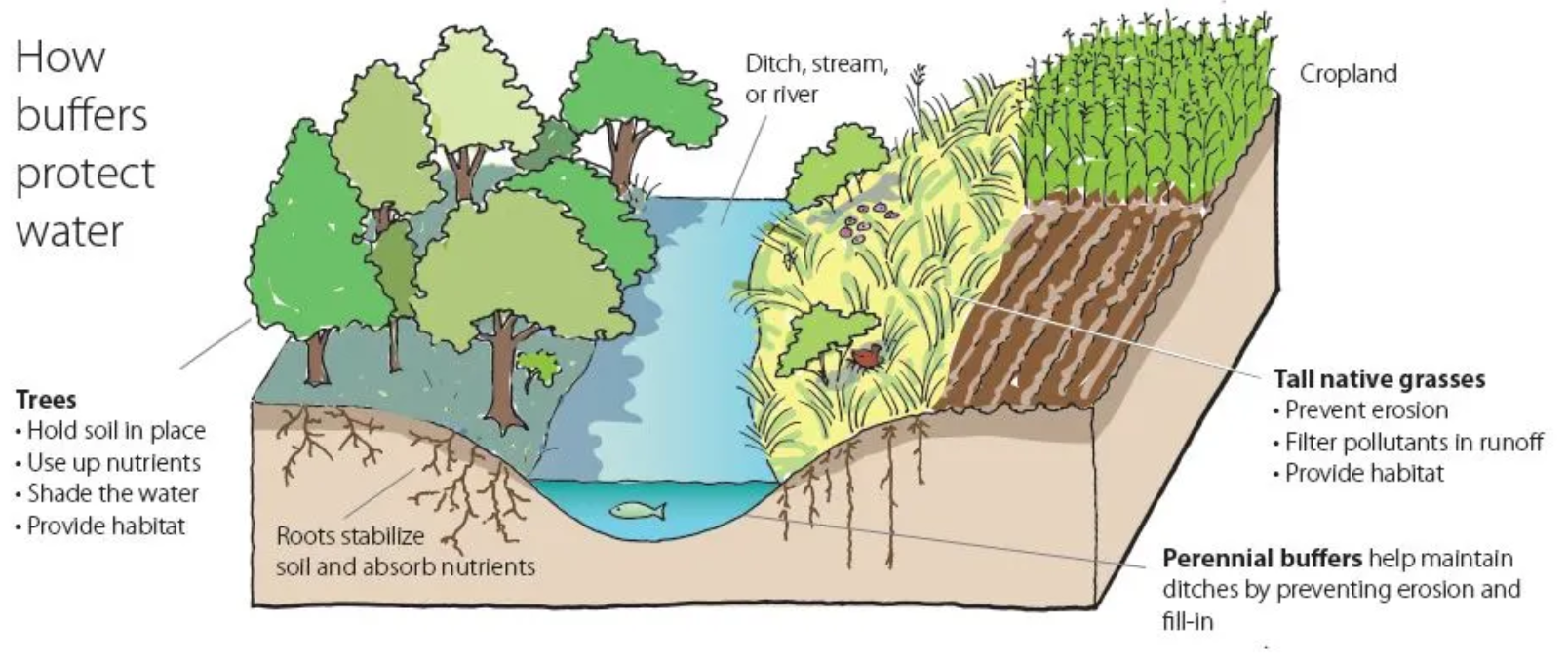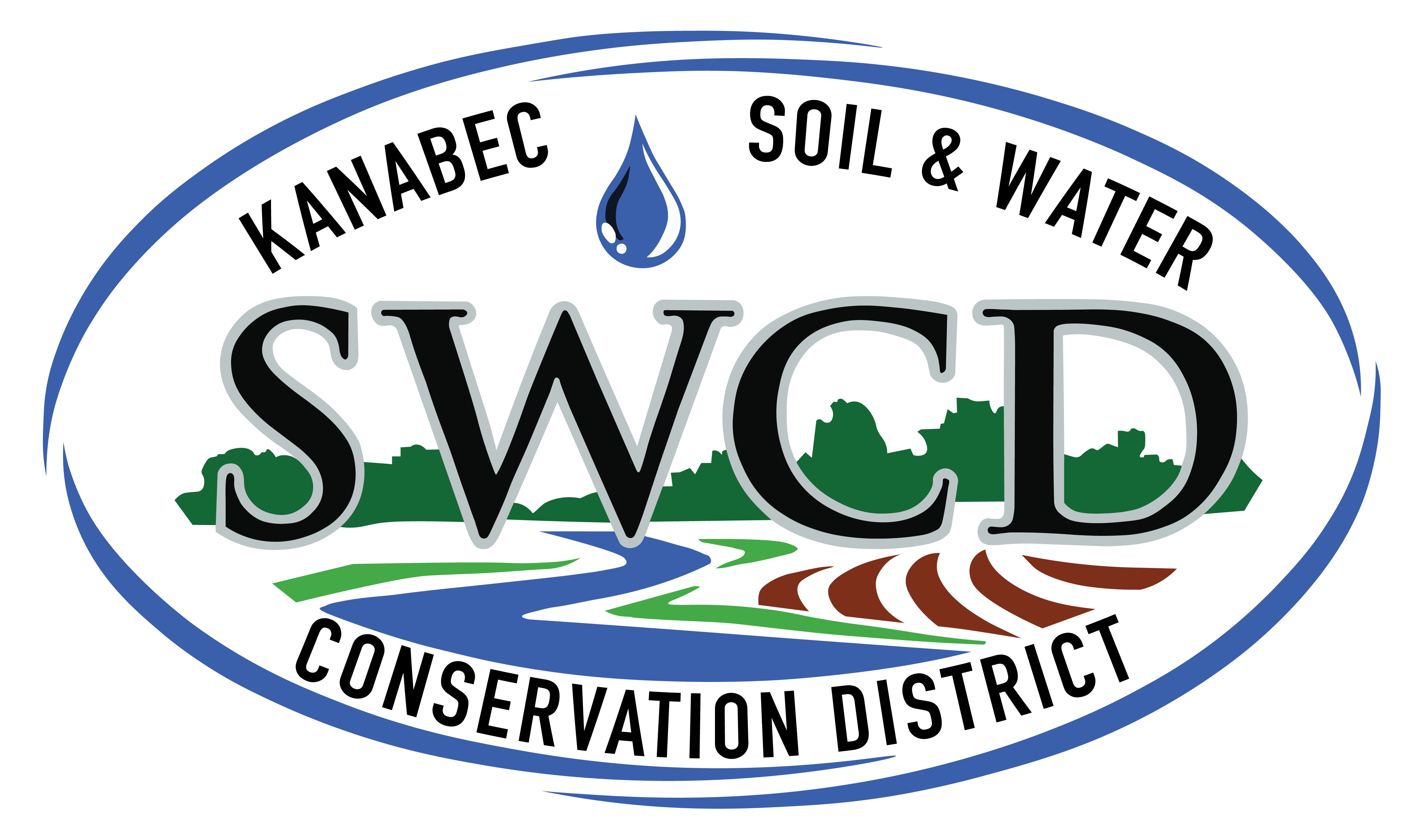Minnesota Buffer Law
In 2015 and 2016, the Minnesota Legislature passed and the Governor signed what is known as the ‘Buffer Law’. This state statute requires a strip of permanent vegetation along public waters and ditches. Public waters, including streams, rivers, and lakes, will require a buffer of 50 feet; ditches operated by a public drainage authority (Kanabec County) must have a 16.5 foot buffer strip.
Kanabec SWCD is responsible for assessing compliance with requirements. We will examine aerial photography to make preliminary determinations. Those appearing to lack the required buffers will be contacted directly in early 2017. Landowners needing assistance are encouraged to contact us directly for technical guidance.
Waters Requiring Buffer Strips
The Minnesota Department of Natural Resources was tasked with creating a statewide map of all public waters and ditches. Working with each county, the DNR assembled the required data and created an interactive map of waters requiring a buffer. Visit the Buffer Map Online Application to see the most current version.
Public waters were defined by a public process undertaken by the DNR in the early 1980s. These waters are protected by state statute as a shared resource for all Minnesotans. The buffer legislation was enacted to limit runoff of sediment, nutrients, and chemicals from agricultural fields.
Below is a map of parcels in Kanabec County that are affected the buffer law. It does not indicate whether the parcel is in compliance or not – contact our office to review your individual situation.

Vegetative Buffers Help Keep Water Clean and Healthy

Permanent Vegetation
To qualify as permanent vegetation, a buffer strip must have little to no exposed soil. Producers are permitted to graze livestock or hay the grass, so long as proper management practices are followed. Noxious weeds must be eliminated. Turf grass (mowed lawn) is similarly allowed. However, Kanabec SWCD encourages landowners to leave no-mow strips, preferably planted with native grasses and wildflowers.
Kanabec SWCD Monitoring Plan for Buffer Compliance Tracking
